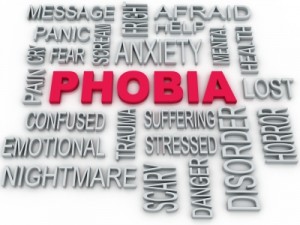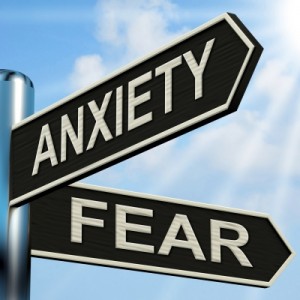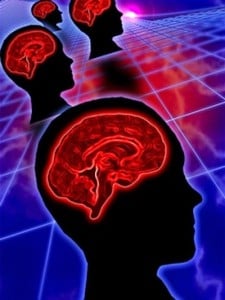
Anxiety manifests in a variety of different disorders, including phobia, defined as unreasonable yet overwhelming fear of something. Typically, the trigger for someone who experiences phobia should pose very little or no threat to a person. However, phobia causes serious physical and emotional reactions of distress.
Naturally, some fears are not uncommon in a person’s life, however if particular fears suddenly begin interfering with a person’s day-to-day life, treatment is required to reduce and/or eliminate the trigger.
Phobias are distinguished with three main categories:
Agoraphobia, or fear of open spaces, is a type of phobia that occurs when a person fears being in spaces that provoke feelings of being trapped or helpless. Previous panic attacks regarding these situations cause the phobia. People with agoraphobia can have anticipatory fear of a situation where they have no escape, a feeling experienced during previous panic attacks. Agoraphobia makes it difficult for sufferers to feel safe in any given place, which can deter people from engaging in any social situations, and, worst case, leaving their home at all.
Social phobia involves excessive self-consciousness while interacting with others and fear of humiliation. People affected by social phobia may come off as very shy, however the phobia is much deeper. Those with social phobia are consumed by fears about being rejected, heavily judged, or causing offense to others.
Specific phobias involve a specific thing or situation to which a person feels irrational levels of fear despite the low risk of actual threat. There are many different specific phobias ranging everything from fear of enclosed spaces to fearing particular animals to fearing loud noises. Additionally, it is not terribly unusual for a person suffering with phobia to fear more than one trigger.
 Symptoms of phobia include uncontrollable feelings of panic and fear when exposed to the trigger. The body will have physiological reactions to these triggers as well as psychological reactions, leading to symptoms like sweating, racing heartbeat, difficulty breathing, and more. This eventually leads to withdrawal from every day life. Children who experience phobia are prone to tantrums and clinging to parental figures.
Symptoms of phobia include uncontrollable feelings of panic and fear when exposed to the trigger. The body will have physiological reactions to these triggers as well as psychological reactions, leading to symptoms like sweating, racing heartbeat, difficulty breathing, and more. This eventually leads to withdrawal from every day life. Children who experience phobia are prone to tantrums and clinging to parental figures.Neurofeedback has the ability to train the brain to react calmly to phobia triggers in order to live a healthy and normal life. Safe for children and adults, the initial brain map locates where in the brain the disruption exists, and neurofeedback sessions help to correct the person’s brainwaves to decrease the frequency and duration of panic episodes.
First image courtesy of David Castillo Dominici at FreeDigitalPhotos.net
Second image courtesy of Stuart Miles at FreeDigitalPhotos.net





